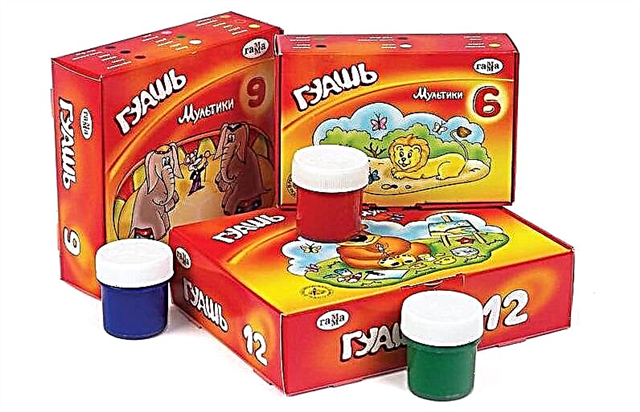Young parents often ask pediatricians why their child vomits after eating. There are many reasons. If more often vomiting after eating is considered relatively safe, then sometimes it can be a sign of a dangerous illness. What are the causes of baby vomiting and when should you worry?

Nausea in a child
The concept of the gag reflex
Nausea is a feeling of inevitable vomiting, and vomiting is the discharge of stomach contents into the esophagus and mouth.
When the body wants to expel irritants penetrating into it, the following reflexes come into play:
- sneezing - removing them from the nose;
- cough - from throat and lungs;
- diarrhea - from the intestines;
- vomiting - from the stomach.
Reflex action may include an increase in saliva production prior to an episode of vomiting.
Vomiting is a complex, coordinated reflex controlled by a specific area of the brain that responds to signals from:
- mouth, stomach and intestines;
- a circulatory system that can contain drugs or infections;
- the regulatory centers of the vestibular apparatus in the ear (as, for example, during motion sickness or travel in a car);
- other brain centers that process unpleasant visions, smells, or thoughts.
Causes of vomiting before or after eating
Why the baby burps immediately after eating should not worry the parents, since this is normal in infants. Spitting up does not cause discomfort in the baby, he behaves calmly. Sometimes this is observed after each feeding and is explained by the physiological characteristics of the baby's digestive tract.
If a child burps after eating, not just emitting small volumes of swallowed milk, but he has an attack of vomiting, accompanied by general malaise and nausea, then the reasons can vary from poor-quality food to various diseases.
Important! After vomiting, the child's unpleasant symptoms often subside.
External causes
If the child vomits while eating, it may be directly related to the food entering the body, less often – with other external factors:
- Too much food has been eaten. The stomach tends to get rid of excess food. It is not accompanied by a deterioration in the child's condition and does not recur if the quantitative norms of food are observed;
- The gag reflex in a child can be triggered if he has eaten heavy foods high in fat;
- Sometimes parents strive to feed the baby, despite the fact that he does not want to eat at all or these particular foods. Sometimes a child may have a gag reflex even at the sight of food that he does not like. This is due to the psychoemotional reaction to the consumption of junk food;

The baby does not like the sight of food
- Overwork and nervous stress.
The presence of diseases in a child
If vomiting caused by external factors can occur once, then in the presence of diseases, it will be observed often when eating.
Diseases and painful conditions that stimulate the gag reflex:
- Poisoning by poor quality products. Moreover, if mom ate them, toxins can also be present in breast milk. Other toxic substances are components of some medicines that a nursing mother uses;
Important! Vomiting in case of poisoning may not be immediately, but after 2-3 hours.
- The acute phase of diseases that disrupt the activity of the stomach (among them - gastroenteritis and acute appendicitis);
- Rotavirus infection;
- Viral hepatitis;
- Food allergy. If a child eats new foods and vomits immediately, these may be symptoms of an allergy to them;
- Acetonic vomiting. A fairly common disorder in children, mainly caused by a lack of carbohydrates in the diet and an excess of protein. As a result, "ketone bodies" are formed in the child's body, first of all - acetone, which, when they enter the stomach, provoke vomiting. Often the child vomits immediately after eating. This condition is easily treatable or disappears spontaneously when the baby's diet is balanced.
Congenital diseases
A number of pathologies in a baby have existed since birth:
- Pyloric stenosis. It is observed when the hypertrophied muscle between the stomach and intestines narrows the passage and prevents the flow of stomach contents into the small intestine. The infant eats well, but vomits violently every time after eating;

Pyloric stenosis
- Pylorospasm. It is characterized by the inability of the pylorus muscle fibers (at the exit from the stomach) to relax normally. Occurs between the second and twelfth weeks after birth;
- A very rare cause of vomiting after eating in an infant may be esophageal cardiospasm. Usually, this congenital pathology manifests itself at an older age. Characterized by impaired esophageal motility and lack of relaxation of the lower esophageal sphincter during swallowing;
- Intestinal intussusception (obstruction). A disorder in which one segment of the intestine invades another. The segments involved block the intestines and blood flow. It manifests itself in children from 3 to 36 months;
- Hereditary metabolic disorders - intolerance to gluten, lactose, glucose due to the lack of enzymes that break down them.

Gluten Intolerance Symptoms
Additional symptoms for congenital pathologies are:
- lethargy and apathy;
- stomach ache;
- diarrhea, with some diseases blood is present in the stool;
- body temperature rises;
- labored breathing;
- signs of dehydration - decrease in the amount of urine, dry mouth, lack of tear fluid;
- weight loss.
Important! When vomiting is particularly severe and frequent, blood may be present due to damage to the blood vessels.
What to look for
If a child vomits after eating, parents should carefully monitor his condition, paying attention to a number of factors. This is necessary for correct diagnosis in hospitals.
Circumstances of vomiting
When the child is sick, then vomits after eating, parents should recall:
- what foods and drinks the baby ate;
- what activities or events preceded the onset of the attack;
- whether there have been any illnesses in the past weeks, months or even a year.
Onset of vomiting
A thorough analysis is required:
- when vomiting begins (how long after eating);
- whether seizures recur and how often;
- the suddenness of the attack, or there were some signs, complaints of malaise, for example, nausea, etc.).
The nature of vomiting
Here you need to pay attention to:
- duration of vomiting;
- are they accompanied by abdominal pain;

Abdominal pain in a baby
- whether the painful sensations pass after the eruption of vomit, and whether the general condition of the baby is alleviated.
Vomit consistency
Vomit should be carefully examined and determined:
- their total volume;
- color and presence of impurities.
When a doctor's visit is needed
If a child vomits after eating, this is an alarming sign that requires the consultation of a pediatrician when:
- the baby is not yet three years old;
- vomit contains blood, ground coffee color, or bright green;
- attacks are repeated for 48 hours or more;
- the temperature rises;
- similar symptoms appear in other family members;
- skin rashes appear;
- have severe abdominal pain;
- diarrhea or severe constipation.
Important! Children who have signs of dehydration (rare urination with dark urine, dry mucous membranes, etc.) should undergo an urgent medical examination. Dehydration is much worse for infants, and dehydration sets in faster than adults.
Children who have had a single episode of vomiting with or without diarrhea, drink enough fluids and have no other signs of a health disorder rarely need medical supervision.
First aid for vomiting
The main thing that parents should do is to make sure that the body does not become dehydrated.

The drug "Regidron"
With an emetic urge, you do not need to strive to stop it, let the body expel the substances that irritate it. After vomiting, you must:
- Provide the child with peace, try not to encourage active games, not to use children's swings and similar structures;
- You should not feed your baby for about 6-8 hours after vomiting. Then start feeding carefully, in small portions and light foods;
- It is good if the child falls asleep - sleep promotes the release of the digestive system through the intestines;
- Give your child a teaspoon to drink at short intervals. If vomiting was repeated, then it is necessary to use agents restoring the water-salt balance, such as "Regidron".
Important! It is not recommended to give your baby sugary drinks to drink.
Diagnostics and treatment
Correct diagnosis of vomiting is possible only in a hospital setting. For most children, special research is not required. However, when abdominal abnormalities are suspected, diagnostic tests are performed.

Examination of the baby by a pediatrician
If a hereditary metabolic disorder is suspected, blood tests are done. When dehydration is at stake, a blood test is done to measure electrolyte levels (minerals needed to maintain fluid balance in the body).
Treatment options depend on the diagnosis:
- In case of poisoning, sorbents are prescribed (Smecta, White coal, etc.);
- To restore the water balance, rehydrating drugs are used (mainly "Regidron");
- In the presence of congenital and acquired diseases, appropriate therapy is performed, sometimes requiring surgical intervention, but more often drug treatment and a strict diet. Antihistamines are used to treat food allergies.
Vomiting in children after eating is most often caused by eating mistakes or rotavirus attack. In most cases, the body recovers quickly. It is especially important to keep your baby hydrated and to maintain rest.



